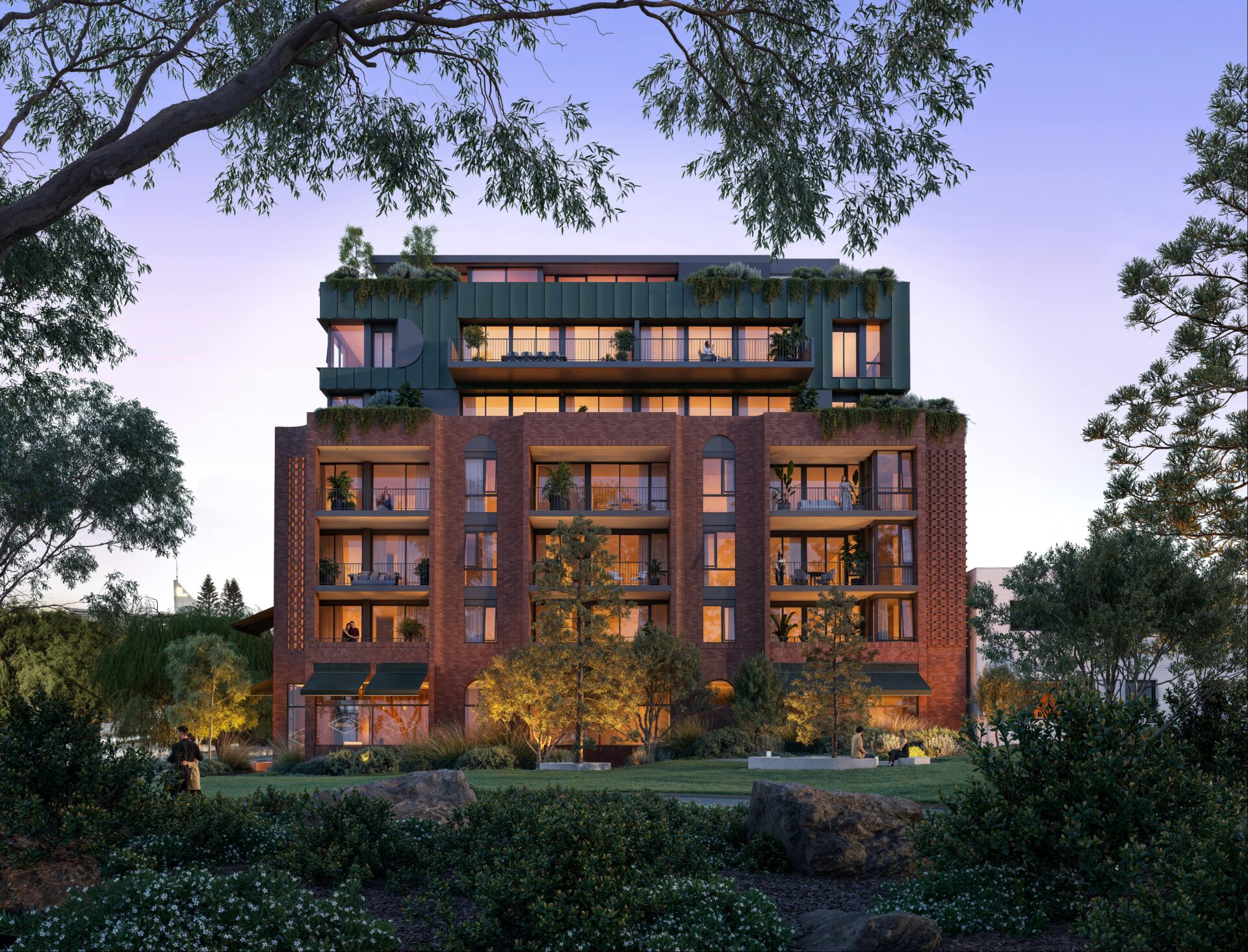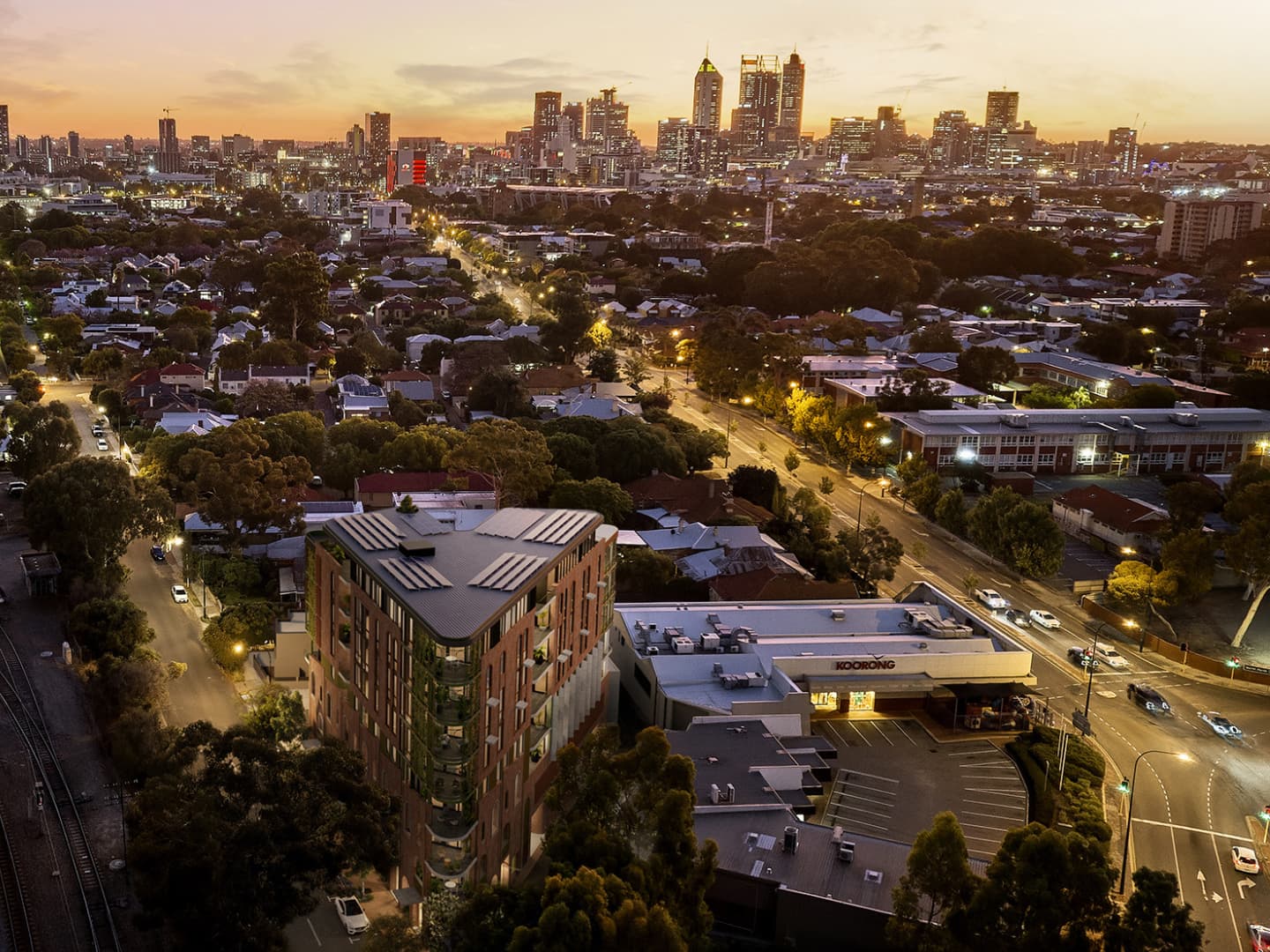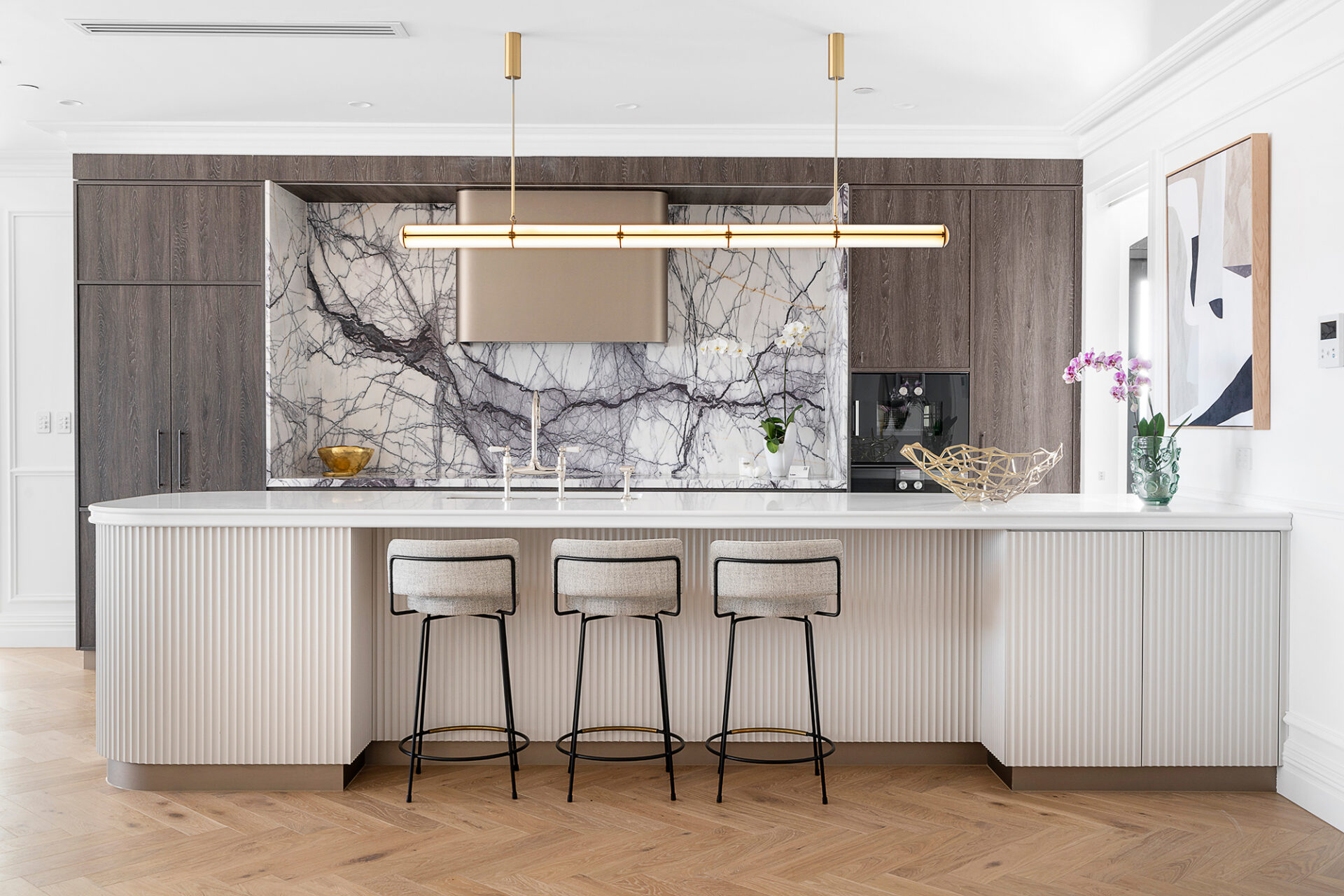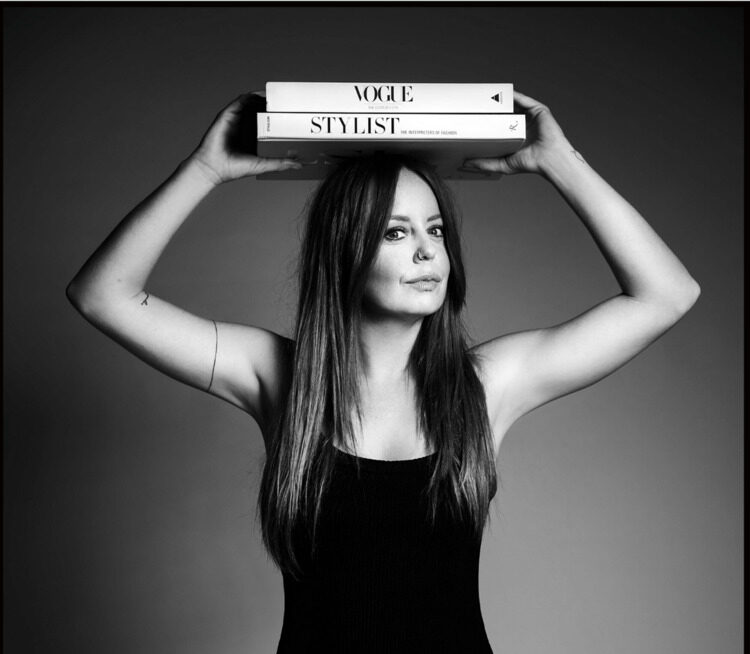Through the Glass: Teagan Sewell on Dressing Willing’s World in Style and Scale
 Teagan Sewell is no stranger to crafting visual stories that resonate. A prominent Australian stylist and creative, her work moves seamlessly between the commercial and the conceptual — from luxury campaigns for Argyle Diamonds and Tourism Australia to editorial styling for Myer and campaign styling for Claremont Quarter. For her latest project, Sewell turned her eye to something more intimate yet equally arresting: the Willing window on Beaufort Street. In a poetic collision of style, storytelling and scale, she reimagined the spirit of Willing — its founder, its philosophy, its place in the world — through a miniature diorama that invites passersby to pause, peer in, and feel something.
Teagan Sewell is no stranger to crafting visual stories that resonate. A prominent Australian stylist and creative, her work moves seamlessly between the commercial and the conceptual — from luxury campaigns for Argyle Diamonds and Tourism Australia to editorial styling for Myer and campaign styling for Claremont Quarter. For her latest project, Sewell turned her eye to something more intimate yet equally arresting: the Willing window on Beaufort Street. In a poetic collision of style, storytelling and scale, she reimagined the spirit of Willing — its founder, its philosophy, its place in the world — through a miniature diorama that invites passersby to pause, peer in, and feel something.
Part memory, part mise-en-scène, her curated display distills the brand’s essence with warmth and a reverence for what home truly means. We spoke with Teagan about the depth of nostalgia in shaping this emotive display — and the art of styling a world that exists just beyond the glass.
Q1. What was the first spark of inspiration for this window? Did you start with an object, a mood, or a story?
The first spark was wanting to capture the essence of what I felt Willing is creating — the sense of community that lives around their buildings. It’s not just about architecture; it’s about all the small, intentional details that make a house feel like a home. It’s about belonging — the objects we add to a space, the ways we make it our own. I wanted someone passing the window to catch their reflection and, for a moment, imagine themselves living there… feeling at home in a Willing apartment. The diorama became my way of expressing that vision. I wanted it to reflect everything Tim is building — not just the physical spaces, but what they bring to the neighbourhood: the cafés, the wine bars, the energy, his love of coffee, design, and the arts. I wanted it to spark conversation. To invite people to stop, look, and feel something. There’s so much noise out there — I wanted this to feel refined, thoughtful, and magnetic.
Q2. The pieces feel incredibly personal — how did you go about interpreting Tim Willing’s story through objects and design?
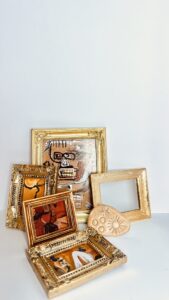 In my role as a fashion stylist, I’m trained to notice things — forecasting trends, recognising patterns, picking up on the small details most people overlook. It’s almost like a visual memory that stays with me. I remember seeing a post where Tim had an Eames chair, and I clocked it instantly as its on my own Pinterest board for my dream interiors . I knew there was a strong connection to music — particularly KISS — and I could see how his buildings carried the charm and lines of mid-century architecture. So when it came to this concept, I wanted to weave all of that in. The subtle cues, the cultural references, the design language — to create something that felt deeply considered and unmistakably *him*… Willing Buildings.
In my role as a fashion stylist, I’m trained to notice things — forecasting trends, recognising patterns, picking up on the small details most people overlook. It’s almost like a visual memory that stays with me. I remember seeing a post where Tim had an Eames chair, and I clocked it instantly as its on my own Pinterest board for my dream interiors . I knew there was a strong connection to music — particularly KISS — and I could see how his buildings carried the charm and lines of mid-century architecture. So when it came to this concept, I wanted to weave all of that in. The subtle cues, the cultural references, the design language — to create something that felt deeply considered and unmistakably *him*… Willing Buildings.
Q3. If this window were a short film, what would it be called?
“Form Follows Feeling”
Its twist on the modernist mantra, “Form follows function” is a design principle. It means the shape of a building or object should primarily relate to its intended purpose or function. How something looks should be driven by what it’s meant to do. It was a foundational idea in
modernist architecture and industrial design — made famous by architect Louis Sullivan in
the late 19th century, and later embraced by designers like Bauhaus and Dieter Rams. In practice:
- A chair should be designed to support the human body — its form should reflect comfort
and use, not just aesthetics. - A building’s windows, materials, or layout should reflect how people will live or move
through it, not just how striking it looks from the street.
This philosophy aligns beautifully with what Willing is creating — design that isn’t just decorative, but lived-in, considered, and intentional. My diorama isn’t just form for form’s sake — it’s storytelling with purpose.
Q4. Was there a particular memory or anecdote about Tim that shaped the direction of the design?
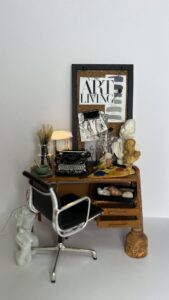 Yes — there was a moment that really shaped the direction for me. When I asked what defines Tim and Willing, you mentioned his childhood growing up in the area, and how he’s now creating community through the very streets he once walked — through his cafés, bars, and buildings. That really stayed with me. It gave the project a deeper emotional layer — this wasn’t just about design, it was about coming full circle. That sense of place, memory, and impact. The line “From these streets, for these streets” captured that beautifully, and I wanted to thread that sentiment through the entire window — especially in the artwork, which positions Willing as a cornerstone of the neighbourhood. A builder, yes — but also a connector. A storyteller. A local.
Yes — there was a moment that really shaped the direction for me. When I asked what defines Tim and Willing, you mentioned his childhood growing up in the area, and how he’s now creating community through the very streets he once walked — through his cafés, bars, and buildings. That really stayed with me. It gave the project a deeper emotional layer — this wasn’t just about design, it was about coming full circle. That sense of place, memory, and impact. The line “From these streets, for these streets” captured that beautifully, and I wanted to thread that sentiment through the entire window — especially in the artwork, which positions Willing as a cornerstone of the neighbourhood. A builder, yes — but also a connector. A storyteller. A local.
Q5. Some of the pieces are clearly meaningful — how did you choose which parts of Tim’s world to bring to the forefront?
For me, it wasn’t just one detail — it was how all the details came together to create a tapestry. That idea that we are greater than the sum of our parts — and our homes are like that too, especially when it comes to style. One object doesn’t make a home. It’s the collection of pieces, the thoughtful design touches you weave in over time. It’s the atmosphere you create, the life you build — with someone, or just for yourself. That’s where the real beauty lives.
Q6. If you had to sum up Tim’s essence in three objects — one from the display and two imaginary — what would they be?
1.) Eames chair
2.) Imaginary, would be the (ba·skee·aa) basquiat painting as his street-esq style would work well with the juxtaposition with the high end feel of the appartments style.
3.) The highly sort after Kiss guitar collection
Q7. What was the most unexpected challenge in bringing the window to life?
I’m used to VM being front-facing only — where the focus is purely on the view from the street. Call it smoke and mirrors, but traditionally, what’s behind the display isn’t seen, so it doesn’t need to be finished. But in this case, the back was fully exposed — which meant it had to be just as considered as the front.
Q8. Did anything in the process surprise you — like a piece suddenly “clicking” into place or taking on new meaning?
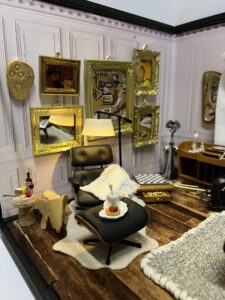 Yes — at first, the diorama was just a frame. The plan was to place a few miniature designer pieces inside. I liked the juxtaposition of scale — oversized bulldog clips, paperclips, and push pins alongside the tiny, carefully crafted furniture. But as it came together, it felt too bare. It didn’t feel like a home yet. So I started layering in the elements — the details I think of as quintessentially Mount Lawley. That’s when the space really came to life. I used to live on Beaufort Street, so I tapped into those memories — the moments that made the area feel special to me. It was jumping on a bike and riding through Hyde Park. It was wandering into Planet Books and picking up a great coffee table book. It was buying a bunch of flowers from one of the many local florists. It was the café culture, the bar scene, the creative energy in the air, and making a community with other like minded people from the area. I wanted all of that to be represented — in 1:12 scale. A tiny world, yes — but one full of soul, story, and place.
Yes — at first, the diorama was just a frame. The plan was to place a few miniature designer pieces inside. I liked the juxtaposition of scale — oversized bulldog clips, paperclips, and push pins alongside the tiny, carefully crafted furniture. But as it came together, it felt too bare. It didn’t feel like a home yet. So I started layering in the elements — the details I think of as quintessentially Mount Lawley. That’s when the space really came to life. I used to live on Beaufort Street, so I tapped into those memories — the moments that made the area feel special to me. It was jumping on a bike and riding through Hyde Park. It was wandering into Planet Books and picking up a great coffee table book. It was buying a bunch of flowers from one of the many local florists. It was the café culture, the bar scene, the creative energy in the air, and making a community with other like minded people from the area. I wanted all of that to be represented — in 1:12 scale. A tiny world, yes — but one full of soul, story, and place.
Q9. If the window changed with the seasons, what would the next version look like?
Right now the window feels autumnal, I could see it turning into Spring, and something with animation and flowers blooming, or following the direction of the sun across the windows. Something bold and visual to grab peoples attention. The opposite of the miniatures. I’m all about opposites, change, giving someone they something didn’t except.
Q10. What was the most fun part of creating this window — the moment that made you smile or feel like a kid again?
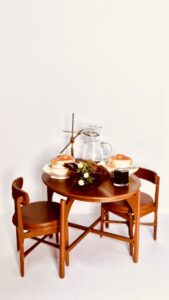 Seeing the miniature designer pieces arrive from all over the world absolutely blew me away. Some came from artists in places going through incredibly tough times — like Ukraine and Israel. And yet, they’re still creating — crafting these beautifully detailed, thoughtful objects with such care and precision. As a visual artist, that felt incredibly empowering — to be able to collaborate in this quiet, global way. To call in these pieces, support these artisans, and honour their work through this installation. It reminded me again of how art connects us, how community can be built across distance, even in miniature.
Seeing the miniature designer pieces arrive from all over the world absolutely blew me away. Some came from artists in places going through incredibly tough times — like Ukraine and Israel. And yet, they’re still creating — crafting these beautifully detailed, thoughtful objects with such care and precision. As a visual artist, that felt incredibly empowering — to be able to collaborate in this quiet, global way. To call in these pieces, support these artisans, and honour their work through this installation. It reminded me again of how art connects us, how community can be built across distance, even in miniature.
One of my favourite outings as a kid was visiting a place called It’s a Small World, near Kings Park, next to the old Dolls’ Hospital. It was run by a woman who made every single miniature by hand. Upstairs, there was an automated train and tiny moving rooms. Downstairs, a life-sized chessboard where, as a kid, you were the same size as the pieces. And then — the dollhouse room, where everything was for sale. It was magic. I recently found out that same woman, now in her 80s, is still making miniatures — and is one of only two miniature crafters left in Australia. After finishing this diorama, I went to visit her and picked up a few final pieces. It felt like a full-circle moment. One of my most vivid childhood memories suddenly connected to my life now. I was standing in her shop, building my own miniature world for a professional project. That’s when I realised just how powerful childhood creativity really is — you never know when, or how, it’s going to shape the work you’re meant to do.
Q11. What’s a tiny detail in the window most people might miss — but you secretly love?
The monstera plant in the dolls house was the very last detail I added — and honestly, I almost left it out. They were fiddly to make, and at one point I thought, maybe it’s not worth it. But now, it’s one of my favourite touches. It finishes the room in a quiet, grounding way — just like a real plant would in a real home. I also placed a large monstera next to the miniature diorama itself, and I love that juxtaposition. There’s something so satisfying about that mirroring — the way art imitates life, and life loops back into the art. It’s those small, layered gestures that give the whole scene a sense of soul.
Q12. If someone only has 5 seconds to view the display, what do you hope they feel or think in that moment?
I’d love people to imagine what living in a Willing building would actually feel like. Not just how it looks, but how it lives. To picture themselves in the apartments — how the light moves through the space, what their morning coffee would taste like, what art they’d hang on the walls. And more than anything, to think about what they’d bring to make it their own. The objects, the rituals, the little pieces of themselves that turn a space into a home.

